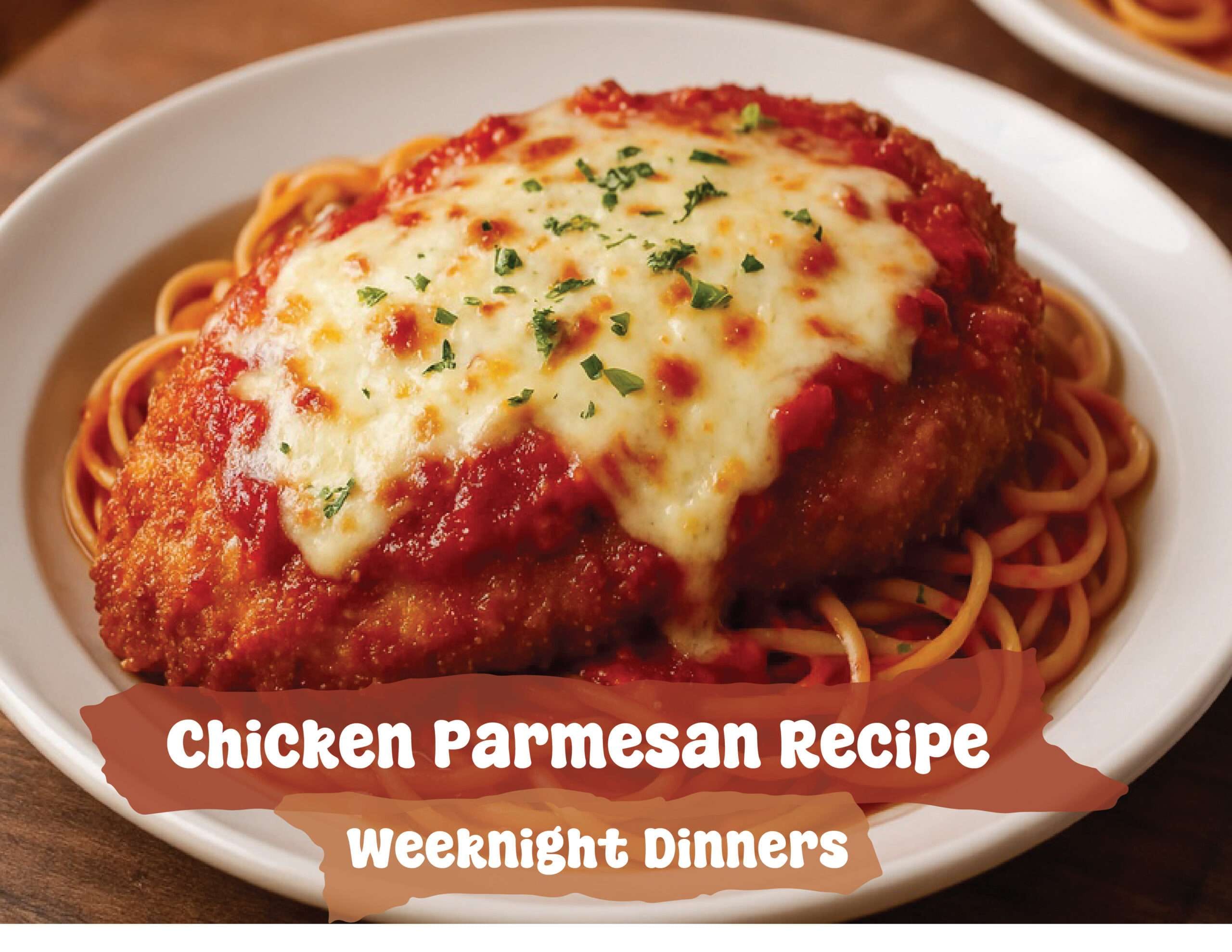
Chicken Parmesan Recipe: Easy Kitchen Method for Home Cooks
This homemade chicken parmesan recipe is one of those dinners that never fails to impress. Juicy chicken cutlets are coated in crispy breadcrumbs, layered with marinara sauce, and topped with melted mozzarella for that perfect mix of crunch and comfort. It’s a classic Italian-American dish that works great for weeknight dinners or family gatherings when you want something hearty but easy to make.
Ingredients
Method
- Preheat your oven to 200°C (400°F).
- Slice the chicken breasts in half horizontally and pound them gently to make them even. Season with salt and pepper.
- Prepare three shallow bowls: one with flour, one with beaten eggs, and one with breadcrumbs mixed with Parmesan.
- Dredge each chicken piece in flour, then dip it in eggs, and coat it with the breadcrumbs mix.
- Heat olive oil in a large skillet over medium heat. Cook chicken for about 3 minutes per side until golden brown.
- Spread half of the marinara sauce in a baking dish, lay the chicken on top, and cover with the rest of the sauce.
- Sprinkle mozzarella cheese evenly and bake for 15–20 minutes, until the cheese melts and bubbles.
- Garnish with fresh basil and serve immediately.
Video
Notes
- For crispy chicken, use panko breadcrumbs instead of regular ones.
- Don’t overbake. Remove as soon as the cheese is melted and slightly browned.
- Use homemade sauce for a fresher flavor: Quick Marinara Sauce.
Seasonal Variations
- Summer Chicken Parmesan: Use light mozzarella and fresh tomato slices for a fresher version.
- Winter Chicken Parmesan Casserole: Layer with extra sauce and bake with penne pasta for a hearty meal.
- Low-carb Chicken Parmesan: Skip breadcrumbs and coat with almond flour for a keto-friendly version (Low-Carb Chicken Parm – amy casey cooks).
Serving Suggestions
- Serve with buttered spaghetti or garlic bread for a full Italian-style dinner.
- Pair it with a crisp green salad or roasted vegetables for a balance.
- For a comforting meal, enjoy it with creamy mashed potatoes.
Tips & Tricks
- Flatten the chicken evenly to help it cook faster and crisp up properly.
- Mix mozzarella with provolone for a richer flavor blend.
- Always drain fried chicken on paper towels before baking to keep the coating light.
- For restaurant-style crispiness, bake the chicken on a wire rack instead of directly in the pan (Crispy Chicken Techniques – Bon Appetit).
Nutrition (per serving)
- Calories: 510
- Protein: 42g
- Carbohydrates: 24g
- Fat: 26g
- Sodium: 960mg




